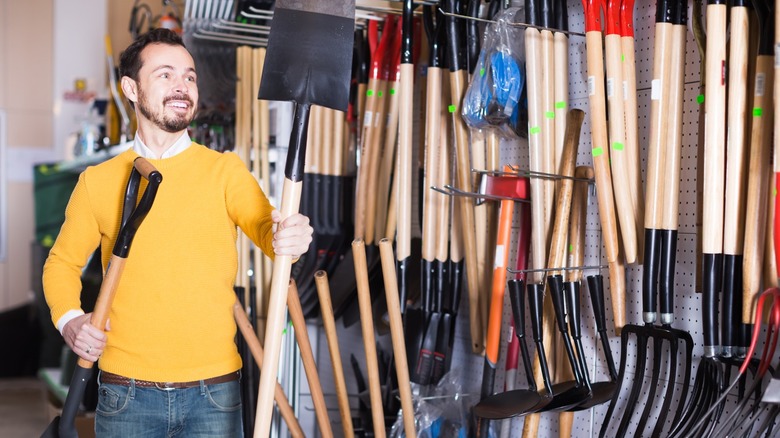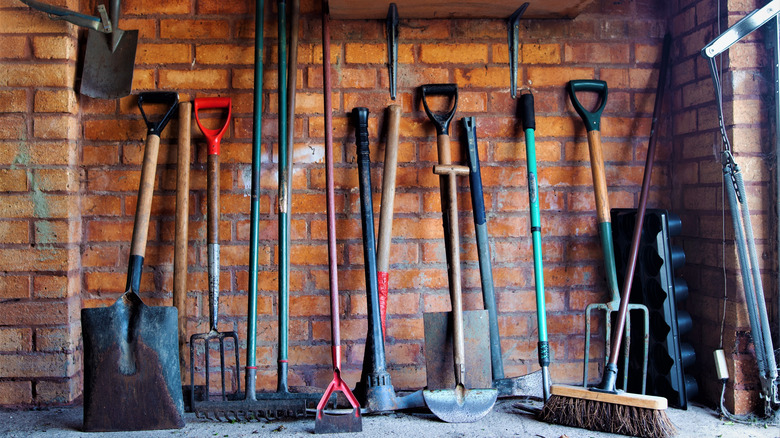Essential Tips For Choosing The Right Shovel For Your Garden
If you're a homeowner with a garden, you probably know that having the right tools is essential for maintaining your garden or lawn. A must-have in any gardener's collection is a good shovel. Chances are, you already have one or two stashed away in your garage. But if you've recently popped into a home improvement store thinking about upgrading your collection, you might have been overwhelmed by the sheer number of shovels available. Each type of shovel serves a different gardening or landscaping purpose, so picking the right one is critical to making your garden work easier and getting the results you need.
The shovel's blade style is just one factor to consider, though. Shovels also vary in height, width, weight (depending on the material), handle grips, shaft length, and lift angle. These variations aren't just trivial details — they're crucial to finding a shovel that fits the job you intend to use it for and complements your strength and stature.
Choose the right shovel for the job
Shovels are indispensable tools for home and garden use throughout the year, aiding in everything from digging to transporting materials like soil, grain, and snow. When choosing a shovel, the first thing to consider is where and how you'll use it. The design of the shovel's blade, including its tip or point, determines its function. There are three main types: digging, scooping, and specialty shovels. Digging shovels, such as round-point shovels, are perfect for breaking and lifting tough soils, thanks to their tapered edges that easily pierce hard ground. Scooping shovels, like square-point shovels (aka transfer shovels), are lighter and ideal for moving materials over extended periods. Specialty shovels are made for a particular purpose. For instance, drain spades are designed for precise tasks like transplanting or uprooting plants, while snow shovels or snow pushers are designed for shoveling snow from your deck.
You'll likely need different shovels for a particular gardening project. For instance, if you plan to expand your flower beds for a bigger and better garden, you'll need a few different shovels. A lawn edger will help you get a sharply edged bed in your lawn, a round-point shovel is excellent for digging out the dirt, a transfer or scoop shovel will make it easier to lift and move dirt and mulch, and a trenching or drain spade is perfect for more precise tasks like transplanting perennials, removing plants with dead roots, or clearing tight, hard to reach spots.
Other things to consider before buying a shovel
Choosing the right shovel involves several considerations, starting with size. For digging shovels, opt for a long handle that reaches about as high as your chest or shoulders. This provides leverage, allowing you to move more load with less effort. The blade's angle relative to the shaft is also essential; a minimal angle reduces fatigue when breaking up compact ground, while an angled one gives you more power and leverage to dig and lift with less bending.
It's a no-brainer that you should match the weight of your shovel to your stature. After all, using a shovel that's too heavy for you results in more work and reduced efficiency. You should also consider the material you'll be lifting. If it's heavy, use a lighter shovel. If it's relatively light, you can afford the additional weight of a shovel with a deeper scoop. The material of your shovel also impacts its weight. While steel blades are ideal for heavy work like shoveling and digging, plastic types are better for lighter objects like snow and sand. If steel proves too heavy but you need durability, an aluminum shovel is a lighter yet stronger alternative. Similarly, shovel shafts come in wood, fiberglass, or steel — each offering different benefits. Wood is more cost-effective, but fiberglass is a more durable and lighter option. Meanwhile, steel is ideal for heavy-duty work.


